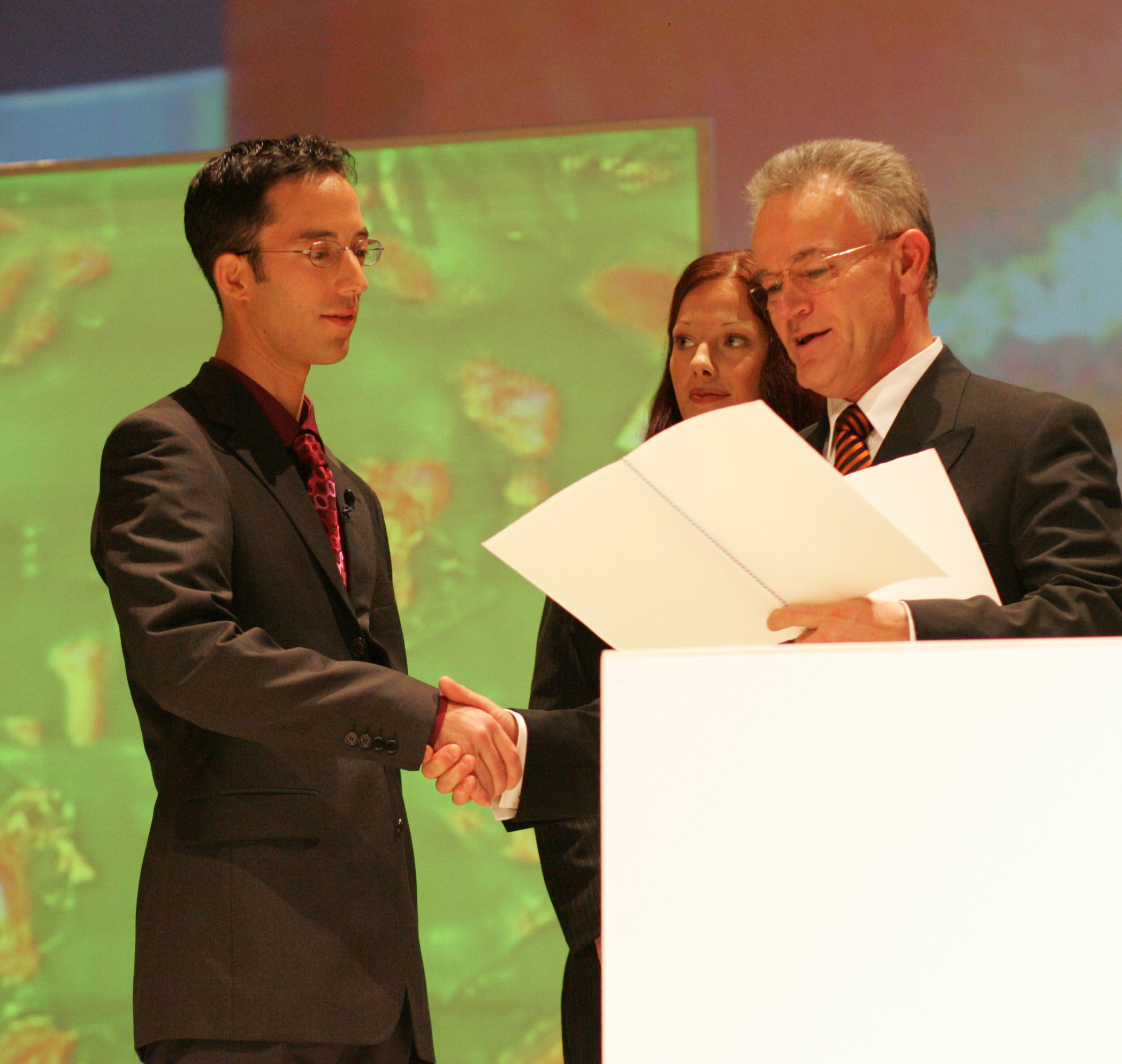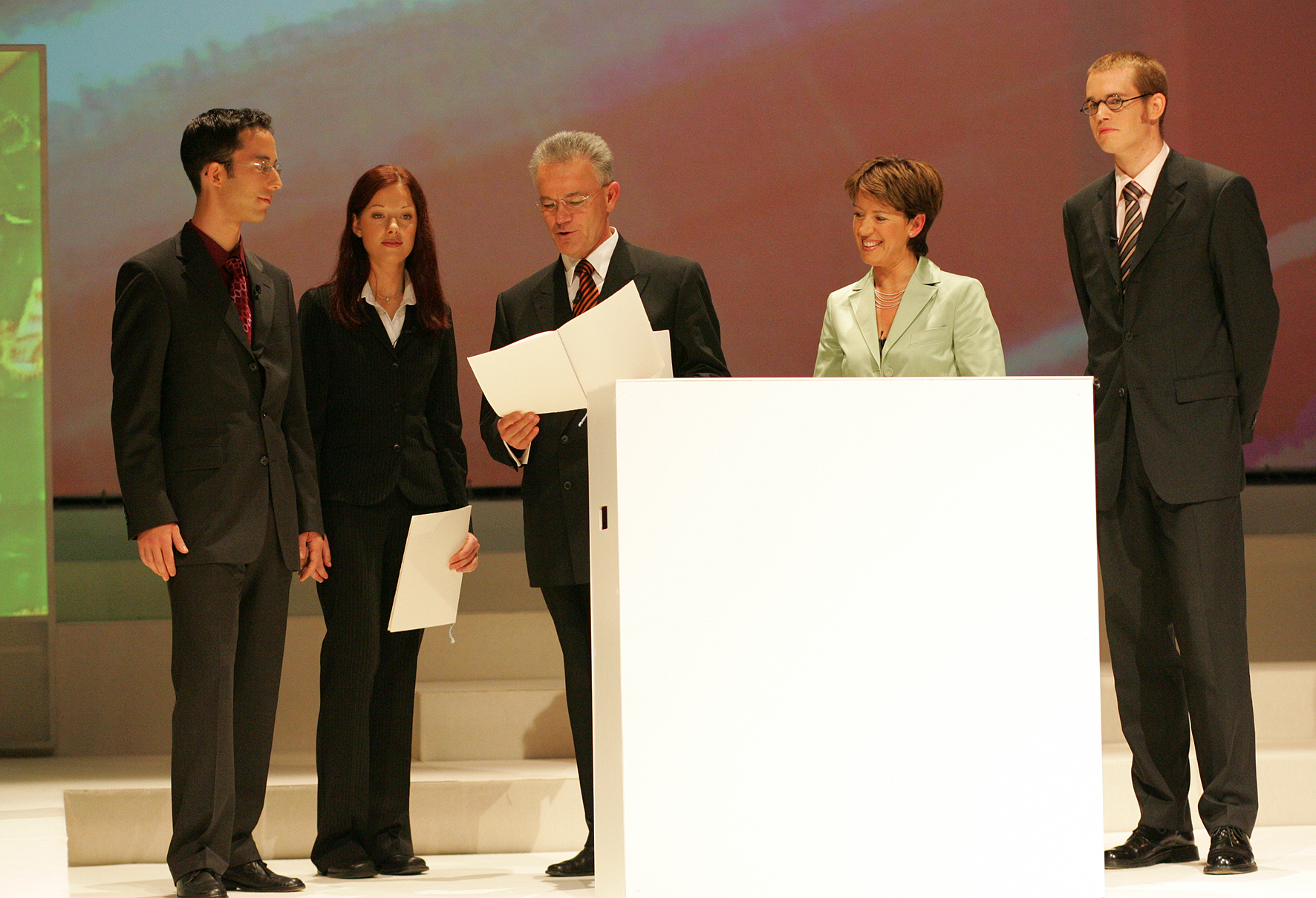Cell wall proteins identified as virulence factors – Hugo Geiger Prize 2004
Three junior scientists have earned the Hugo Geiger Prize for their thesis papers this year: Frank Meinecke dealt with the separation of neural signals. Jochen Schwenk identified proteins in the fungus Candida albicans whereas Michaela Harz worked on a new biochemical sensor.


Clinking glasses, rattling plates, music and conversation. “A cocktail party is a typical example of interference caused by superimposed signals,” relates physicist Frank Meinecke, the winner of this year’s first Hugo Geiger Prize. In the medical world, EEG, ECG and MEG measurements also consist of a mixture of superimposed signals, which makes it almost impossible to detect the original biophysical signals. Statistical projection techniques such as independent compound analysis (ICA) allow blindly mixed signals to be systematically separated. At the Fraunhofer FIRST in Berlin, Meinecke has developed special algorithms to assess the quality and reliability of methods used in blind source separation. The results of his work can be applied in biomedicine, for instance to precisely identify and locate the source of neural signals in the brain.
The second prize was awarded to Jochen Schwenk. At the Fraunhofer IGB in Stuttgart, he has been studying new approaches for the identification of potential virulence factors in Candida albicans, a fungus that can cause life-threatening infections in patients with a weak immune system. Currently available antimycotic drugs produce many unwanted side effects. To enable biological scientists to develop a specific pharmacological treatment, they need to know more about the action mechanisms of the fungal pathogen. “The proteins that control its binding properties are located in the cell wall,” Schwenk explains. “I have devised a two-stage process that allows these proteins to be isolated from the cell wall and subsequently to be analyzed.” Using this process, the biologist has identified a total of 14 cell-wall proteins and a previously unknown one.
The third prize was awarded to Michaela Harz from Jena. At the Fraunhofer IOF, she has developed a surface plasmon resonance (SPR) sensor for the parallel detection of multiple biochemical samples. When a physician sends a blood sample to the laboratory to be tested for specific pathogens, the results often take days to arrive. It would be far preferable for the analysis to take place during the patient’s consultation. Microtechnology has brought this vision much closer to reality. “We have developed a miniaturized test system that allows several samples to undergo simultaneous SPR analysis,” says the medical engineer. “The system’s functionality was verified by testing the timing of biomolecular surface binding reactions.” The test, data capture and analysis processes are controlled automatically. The IOF has submitted a patent application for the new system.
* Hugo-Geiger Prize – promoting talented young scientists
The Bavarian government instituted this prize five years ago, on the occasion of the 50th anniversary of the Fraunhofer-Gesellschaft. It is named for former Bavarian secretary of state Hugo Geiger – patron of the inaugural assembly of the Fraunhofer-Gesellschaft on March 26, 1949. The Hugo-Geiger Prize is awarded for outstanding, application-oriented doctoral theses or dissertations in the field of life sciences. The prizewinning papers are selected on the basis of scientific quality, industrial or economic relevance, novelty, and an interdisciplinary approach. The work must be directly related to a Fraunhofer institute or have been written at a one. This year, the first-placed winner will receive Euro 3,000 in prize money, second place Euro 2,000 and third place Euro 1,500.
 Fraunhofer Institute for Interfacial Engineering and Biotechnology IGB
Fraunhofer Institute for Interfacial Engineering and Biotechnology IGB